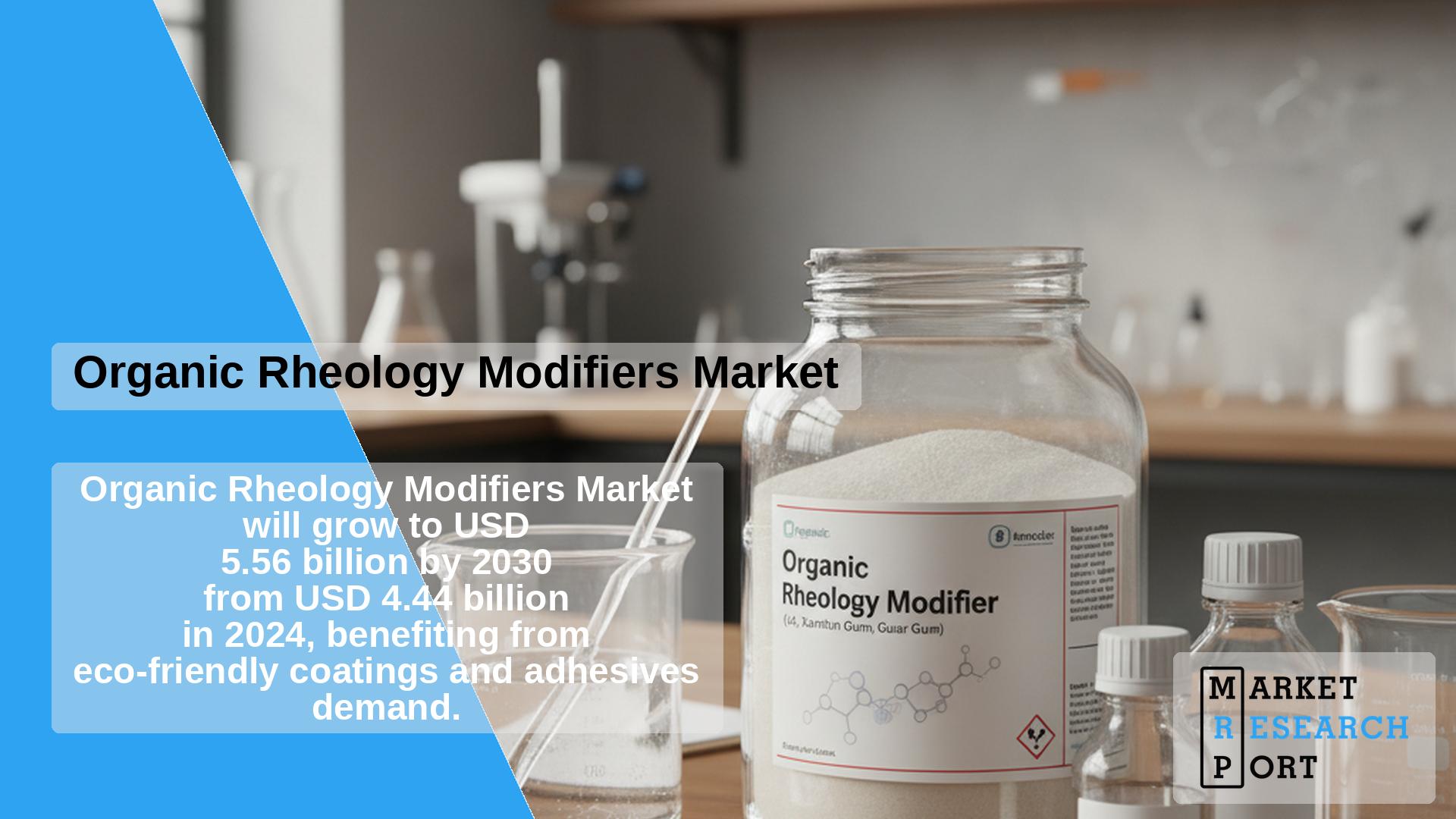
The global organic rheology modifiers market was valued at approximately USD 4.44 billion in 2024 and is projected to grow at a CAGR of around 3.8% through 2030, reaching about USD 5.56 billion. This expansion is fueled by increasing demand for sustainable and eco-friendly products, particularly those with low volatile organic compound (VOC) content. Key factors contributing to this growth include the rapid expansion of the global paints and coatings sector, rising consumption of personal care items, and increasing use in adhesives and sealants.
Organic rheology modifiers are vital additives utilized in diverse industries such as cosmetics, paints, adhesives, and cement-based products to adjust viscosity and flow behavior. Their influence enhances product application properties, such as preventing pigment settling, sagging resistance, and overall formulation stability, making them indispensable in improving quality and durability.
The cosmetics and personal care industry led the market in 2023 with a revenue share exceeding 35%. In this segment, organic rheology modifiers improve the texture, stability, and performance of products, especially in hair care and sunscreens, ensuring consistent distribution of active ingredients and desirable viscosity. In paints and coatings, these modifiers control rheological properties such as sag resistance and leveling, enhancing application via spray, brush, or roller. The oil and gas sector employs these products to maintain appropriate viscosity in drilling fluids and cement slurries, improving operational efficiency under challenging conditions.
North America ranked second globally in revenue share in 2024, driven by rising consumer demand for cosmetics and personal care products, alongside substantial industries in paints, pharmaceuticals, and oil and gas. The U.S. market is expected to experience robust growth due to increasing requests for high-performance paints and coatings and enhanced formulations in personal care. Asia Pacific leads the market, holding over 46% revenue share in 2023, attributed to growing industrialization, construction activities, and automotive expansion, especially in China and India. Europe is anticipated to grow steadily, supported by demand from paints, adhesives, and cosmetics sectors in Western Europe.
The market is competitive and dominated by leading players such as BASF SE, Dow, Ashland Inc., Clariant, and Evonik Industries. These companies invest heavily in research and development to innovate and expand their offerings. BASF, for instance, provides a wide range of synthetic rheology modifiers tailored for efficient water-based applications. Dow offers innovative additives enhancing flow and stability across multiple industries, while Arkema focuses on solvent-free, high-solid solutions for coatings and adhesives.
| Market Size, 2024 | USD 4.44 billion |
| Revenue Forecast, 2030 | USD 5.56 billion |
| Growth Rate | CAGR of 3.8% (2024-2030) |
| Historical Data | 2018-2023 |
| Forecast Period | 2024-2030 |
| Quantitative Units | Volume (kilotons), revenue (USD million) |
| Segments Covered | Application, Region |
| Regional Scope | North America, Europe, Asia Pacific, Central & South America, Middle East & Africa |
| Country Scope | U.S., Canada, Mexico, Germany, UK, France, Italy, Spain, China, Japan, India, South Korea, Brazil, Argentina, Saudi Arabia, South Africa |
| Key Companies | BASF SE, Dow, Ashland Inc., Croda International, Clariant AG, Lubrizol Corporation, Arkema, Evonik Industries, Eastman Chemical Company, AkzoNobel N.V. |